Tag Archives: Gulf of Maine

Sanity! Federal judge blocks lobster fishing ban in the of Gulf of Maine
A federal judge in Maine on Saturday blocked a seasonal ban on traditional lobster fishing in a stretch of offshore waters in the Gulf of Maine that regulators say is needed to save the endangered right whale from extinction. In his 28-page ruling, U.S. District Judge Lance Walker said regulators had relied on “markedly thin” statistical modeling instead of hard evidence to show the thousand-square-mile area they had planned to close was really a hot spot for the imperiled whale. While the area targeted for closure may be a viable habitat for the right whale, there is no hard proof the whales actually gather there,,, >click to read< “This victory by the Maine Lobstering Union is a significant step in protecting one of Maine’s most precious industries – lobstering,” 21:10

‘Environmental Justice’ To Be Part Of NH Offshore Wind Farm Projects – Environmental Justice means NO!
As the Commission To Study Offshore Wind and Port Development approaches a deadline for submitting recommendations to the governor and the legislature, questions about the role of fishermen and others who may be impacted by the project continue to arise. During the commission’s Sept. 27 meeting at the Pease International Tradeport, Erik Anderson, representing the N.H. Commercial Fishermen’s Association, pressed Mark Sanborn, assistant commissioner of the Department of Environmental Services, about worries that wind towers might disrupt the livelihoods of New Hampshire fishermen. “If we ever move forward with offshore wind in the Gulf of Maine, there will be a representative of the commercial fishermen from the New Hampshire side, I promise you,” Sanborn assured him. >click to read< 16:49

Maine aims to create first floating offshore wind project on federal waters
Gov. Janet Mill’s office on Friday submitted an application with BOEM to lease a 15 square mile area in the Gulf of Maine about 30 miles off the coast. “Maine is uniquely prepared to create good-paying jobs across the state and reduce or crippling dependence on fossil fuels through the responsible development of offshore wind technology,”,,, “I believe that offshore wind and Maine’s fishing industry can not only coexist, but can help us build a stronger economy and a brighter, more sustainable future for Maine people,” Mills said. >click to read< 09:41
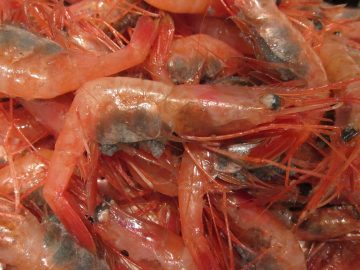
Scientists point to longfin squid for Maine’s prized shrimp fishery collapse
Maine shrimp were long a regional delicacy fishermen and diners alike looked forward to each fall,,, But in 2012, their population collapsed, federal regulators closed the fishery, and they haven’t recovered since. Maine was always at the southern edge of their range, and the crash coincided with an extreme marine heat wave that warmed the Gulf of Maine’s waters to the highest temperatures since the 1950s. But some thought there had to be more to the shrimp’s disappearance than just heat-sensitivity. “After I saw this I remembered a fisherman saying to me ‘it’s the damn squid.’ He was saying there had been squid all over the place that spring,” Richards said. >click to read< 16:22

Challenges abound, but lobstermen say they’re in it for the long haul
Around 2 a.m. each morning, a parade of trucks from around the region begins the journey down to the Stonington docks, marking the start of another day of lobstering in Maine. In short, a large part of coastal Hancock County and beyond depend on lobster. One of the locals that has made her living off lobster is Julie Eaton, a member of Stonington’s 300-plus lobster boat fleet. She’s been at it for 39 years now and to her it’s not just a job, it’s a way of life. Every fisherman has their own story, but almost all of them say they got into the business because they love working on the ocean. 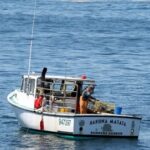 For the hundreds of lobstermen in the region, things are going pretty well at the moment, even with the pandemic. While things are going well, if you talk to almost any Downeast lobstermen about the future of their industry, the conversation will come to two things: right whales and wind turbines. >click to read< 13:28
For the hundreds of lobstermen in the region, things are going pretty well at the moment, even with the pandemic. While things are going well, if you talk to almost any Downeast lobstermen about the future of their industry, the conversation will come to two things: right whales and wind turbines. >click to read< 13:28
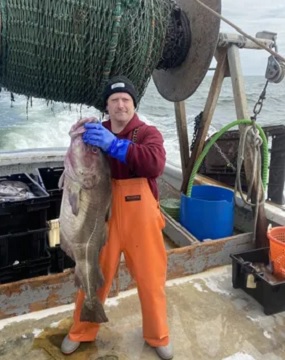
Doomed to Extinction? Where have all the codfish in the Gulf of Maine gone?!!
The commercial fishermen have all been given a personal quota for cod. If they reach their quota, they need to purchase or lease more quota from someone who has extra. The price to “lease” these fish in order to catch them can be exorbitant. Cod has become a commodity on the market being bought or hoarded by non-fishermen to make money off the backs of the active fishermen,,, And then there are the seals. Yes, harbor seals, gray seals and harp seals. Seals would not normally be feeding on large amounts of cod, but we have protected the seal population for decades without regard to the rest of the environment. The result is unmistakably a huge explosion in the seal population within the Gulf of Maine. So, are the cod doomed to extinction? >click to read< 07:50

Maine Fishermen slow offshore wind farm development – Keep Fighting
Actions by Maine fishermen directly affected the process of offshore wind development in the Gulf of Maine with a bill signed into law on July 7 by Governor Janet Mills. The measure was a response to plans that surfaced last year for a 16-square-mile, 12-turbine wind farm, called a “research array,” off the southern coast of Maine. Proponents promised good jobs and cheap, green electricity. Fishermen weren’t so sure. They envisioned wind farms springing up throughout the Gulf of Maine, harming marine life and damaging coastal communities. “We as fishermen work and take care of the water,” said Virginia Olsen, a Maine Lobstering Union director who lives in Stonington. “We feel these things will get dumped on the water and then someone will say, ‘Just leave them there, it’ll be a coral reef.’ But it will just be trash left for us.” >click to read< 16:55
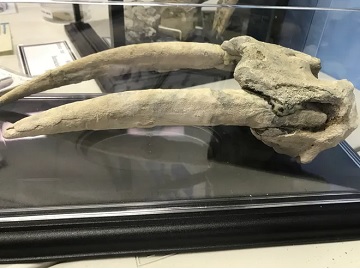
New Hampshire: Skull of extinct Atlantic walrus on display at Explore the Ocean World Oceanarium
Tom Testaverde was fishing his stern trawler, the fishing vessel, F/V Midnight Sun, in about 50 fathoms (300 feet) of water along Race Point off Provincetown, Massachusetts, in the Gulf of Maine. He hauled in the “bag” of fish, concentrating on the catch and the species as the bag opened and spilled onto the deck, when he saw what looked like a middle finger sticking out of the mesh between the fish.,, The skull resided in his garage for many years, but is now on loan to the Oceanarium. Seeing the tusks in person is a real treat and one I love to share with visitors.,,, Many thanks to Tom and the crew of the Midnight Sun for the generous loan of this great piece of natural history. >click to read< 12:22
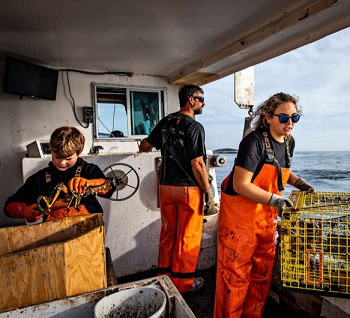
Maine’s having a lobster boom. A bust may be coming.
The waters off Maine’s coast are warming, and no one knows what that’s going to mean for the state’s half-billion-dollar-a-year lobster industry, the largest single-species fishery in North America. Some fear that continued warming could cause the lobster population to collapse. The Gulf of Maine, an ocean body brimming with marine life, is cradled by Cape Cod in the south and the Bay of Fundy in the north, and bounded in the east by two underwater shoals, George’s Bank and Brown’s Bank. In 2015, climate scientist Andy Pershing, formerly of the Portland-based nonprofit Gulf of Maine Research Institute, published a paper in Science concluding that the gulf was warming faster than “99% of the global ocean.” That eye-popping revelation was enough to keep fisheries managers and a whole lot of Mainers awake at night. >click to read< 16:27
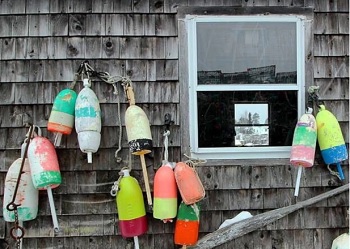
Lobstermen Protest Offshore Wind Farm in the Gulf of Maine
An ambitious wind power project in the Gulf of Maine could, years from now, make these family lobster dinners less frequent. Local lobstermen believe offshore wind will significantly disrupt the ecosystem and displace fishermen. Supporters say a project will provide clean energy for the region.,, “When you think of Maine, lobster’s the first thing that comes to mind,” Dustin Delano, a fourth-generation lobsterman and the Vice President of the Maine Lobstermen’s Association, told me a story about fishermen from the United Kingdom coming to Maine a few years ago to discuss the windmill arrays which had been recently installed where they fish. One Mainer asked, “What would you do if you were us right now?” An English fisherman leaned over the table and said, “Fight it with everything you have, because you have everything to lose and absolutely nothing to gain.” >click to read< 17:04
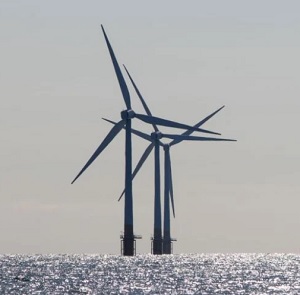
Fishermen support local legislator’s bill that would ban offshore wind projects in the Gulf of Maine
The bill, LD 101, was introduced by Rep. William “Billy Bob” Faulkingham (R-Winter Harbor) who is also a commercial fisherman. “It is time to put a permanent halt to offshore wind development,” Faulkingham said during a hearing with the Energy, Utilities and Technology Committee. Dozens of fishermen submitted testimony,,, Lobsterman Jason Joyce said the push by foreign wind companies seeking to industrialize the Gulf of Maine is an “unprecedented attack” on the fishery. “There are many other options of renewable green energy that don’t require the destruction of a hard-working industry,” wrote Nathaniel Snow, a Tremont lobsterman. “Nuclear power, hydroelectric and solar are all much more viable options. >click to read< 16:50
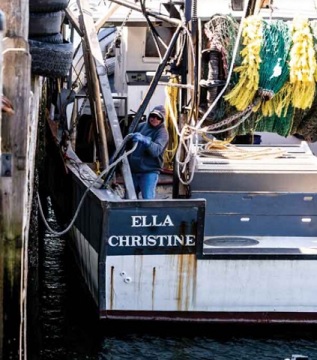
The Last of the Port Clyde Groundfishermen – Once robust, Maine’s groundfishery is on the ropes
When Randy Cushman was growing up in Port Clyde, some 300 trawlers were moored up and down Maine’s coast,,, Today, Cushman is 59 years old and might be Maine’s most knowledgeable commercial fishermen.,, But Cushman is barely scraping by. Prices for cod, flounder, and other groundfish have all but collapsed in Maine. The combination of rock-bottom prices, the need to protect the state’s fish stocks, and a dearth of fishing infrastructure make it harder than ever to be a fisherman here. Today, the robust Maine trawler fleet of Cushman’s youth has been reduced to around 30 boats. photos, >click to read< 14:21

Mainers rally to oppose offshore wind development in the Gulf of Maine
Close to 500 Mainers gathered at the Civic Center in Augusta Wednesday, April 28 to oppose offshore wind development in the Gulf of Maine. Fishermen voiced concerns regarding the unknown impacts to ocean ecosystems, marine habitats, and the fisheries,,, “Rome wasn’t built in a day and we will not stop offshore wind with one rally,” said Virginia Olson of the Maine Lobstermen’s Union, “Augusta knew fishermen were here today, they know we are paying attention, and they know we are asking to be heard. We voiced our legitimate concerns about the impacts that this development will have on the Gulf of Maine which has been our home and supported our fishing families for generations. We are not going to be pushed out of the way.” >click to read< 08:57
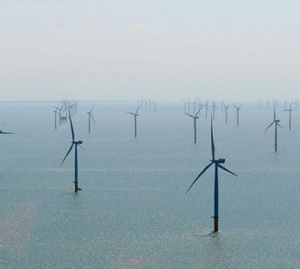
‘Tragedy of the Commons’ Will be the Fate of Marine Environment in Atlantic Offshore Wind Farms
Like the English commons, the Atlantic waters could take just so much ‘grazing’. The Canadian government finally recognized the cod fishery had crashed and closed it;,, Recognizing that fish could not be owned until they were caught, government regulators attempted to at least partially privatize fishing rights. So too, the waters in which they swim (Hague Line dividing CN and US waters in the Gulf of Maine and on Georges Bank.) It was that bottom and those waters that wind farm builders wanted “rights”.,,, So, the question arises “why don’t the fishing interests move to protect these sensitive marine habitats?” They have tried without much success. >click to read< 18:43
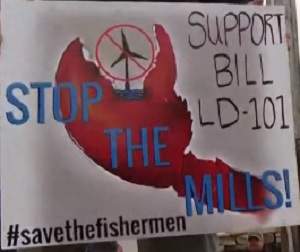
Lobstermen united against Monhegan offshore wind project
In one of Maine’s biggest lobster harbors, close to 100 fishermen and their supporters packed the town dock to stand, side by side, in opposition to offshore wind power development in the Gulf of Maine. For the fishermen, the events of the week have hardened their resolve to fight the wind turbine project, which they say will be just the beginning of more platforms being installed in years ahead. They insist the development will damage the Gulf of Maine, “It’s not about anti-wind, it’s not about anti-green,” said Friendship wharf owner Jim Wotton. “It’s about preserving the Gulf of Maine.” Video, >click to read< 12:21
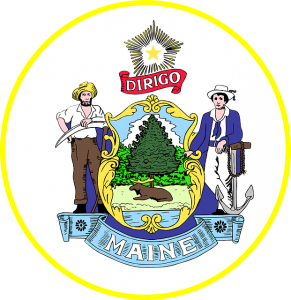
Maine: Local legislators focused on the commercial fishing industry, float several fisheries bills
The 130th Maine Legislature has released a list of bills proposed in the House and Senate,,, The lobster fishery, in particular, is grappling with the prospect of offshore wind energy development and conservation measures, both of which could affect lobstermen and their livelihood.,, Fisherman and state Rep. William “Billy Bob” Faulkingham (R-Winter Harbor) is sponsoring “An Act to Prohibit Offshore Wind Energy Development” (LD 101).,, Rep. Genevieve McDonald (D-Stonington), who also is a fisherman, is sponsoring three fishing-related bills. >click to read< 13:36
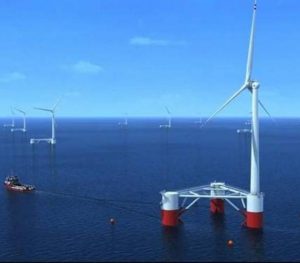
Maine Governor proposes offshore wind farm moratorium
Gov. Janet Mills on Monday proposed a 10 year moratorium (just say no!) on new offshore wind projects in state-managed waters and other actions aimed at calming concerns among the fishing industry about her plan to create the nation’s first floating offshore wind research farm in the Gulf of Maine. In a letter Friday to licensed commercial fishermen, the Democratic governor said she would propose the moratorium to the Legislature. >click to read< 12:38
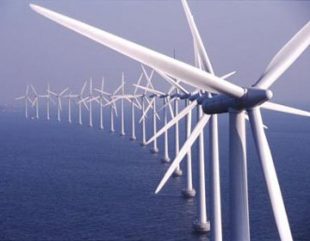
Offshore wind project raises questions for lobstermen
A Gulf of Maine offshore wind power initiative Maine Governor Janet Mills rolled out late last year has raised concern in the lobster fishing community,,, Mills has said the Governor’s Energy Office should “work closely with Maine’s commercial fishing industry,,, The Maine Lobstermen’s Association agrees collaboration is necessary. Maine is also taking part in a federally led task force on offshore wind with New Hampshire and Massachusetts. Named the Gulf of Maine Intergovernmental Regional, >click to read< 19:45

Gulf of Maine: Fishermen Worry About Rapid Pace Of Wind Development
In late November, the Mills administration announced that the state would seek a federal lease for up to 12 floating wind turbines off southern Maine that could produce enough energy for more than 70,000 homes. “We think there’s a real opportunity for Maine to be a leader in the country on floating offshore wind,” says Dan Burgess, (you’re full of crap, kid!) who leads the governor’s energy office. But if Gov. Mills wants to be in the driver’s seat, fishermen say she should take her foot off the gas, and step on the brakes. >click to read< 07:45
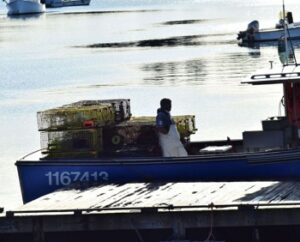
Lobster stock levels remain high in Gulf of Maine, but there is cause for concern
The “now” looks solid for local commercial lobster fishery, based on findings reported in the 2020 Atlantic States Marine Fisheries Commission Lobster Benchmark Stock Assessment, which reported the stock at “record high abundance levels.” The good news continued,, The news for southern New England, including southern Maine, remained poor, with a depleted fishery and no signs of resurgence. The research was conducted by several organizations, including the Department of Marine Resources, Gulf of Maine Research Institute and the University of Maine’s Sea Grant program and Lobster Institute. The assessment, released in October, was based on surveys conducted from 2016 through 2018. However, once the research turns to lobster settlements the future does not look as bright. >click to read< 18:29

Maine Governor Janet Mills plans to create 1st floating offshore wind research farm in US
Gov. Janet Mills said Friday that she plans to create the nation’s first floating offshore wind research farm in the Gulf of Maine,,, The site of the array, which is expected to contain up to a dozen floating wind turbines, is undetermined but will be 20 to 40 miles offshore in an area that would allow a connection to the mainland electric grid for the southern half of the state.,, Mills has directed the Governor’s Energy Office to collaborate with the commercial fishing industry and other state agencies,,, >click to read< 18:10
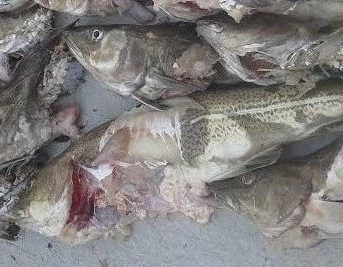
Maine’s booming seal population concerns local fishermen, biologists. Cod predation isn’t mentioned
Biologists say there are three points to consider: While the increase in harbor seals is creating a healthier ecosystem for the Gulf of Maine, it’s also creating problems for local lobstermen who say they’re a threat to their livelihoods, and it’s drawing new and potentially dangerous fish into our waters at a rate the state has never seen before. “I’ve had guys call me and say, ‘Are you having a problem with bait bags being ripped out because of the seals?’ and I say, ‘Yeah. I’ve had five or six.’ he says, ‘Rusty, I just had twenty traps in a row right, in a row. The seals went bang bang, bang, bang, bang right down through and ripped all the bags out,'” Court said. >click to read< Bait bags? What about cod fish bellies?!!
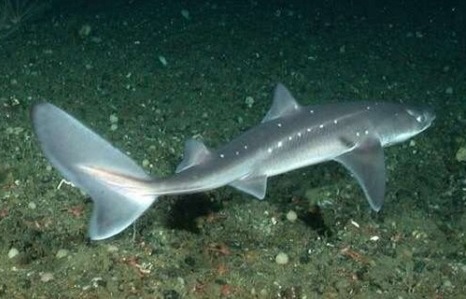
Spiny dogfish eat small Atlantic codfish! DNA may provide some answers
Conventional observations show that spiny dogfish in the western North Atlantic rarely eat Atlantic cod. However, some believe the rebuilding dogfish populations are limiting depleted cod numbers by competition or predation. To find out what is going on, NOAA Fisheries scientists looked to genetic testing to confirm cod presence in dogfish stomachs. >click to read< 13:10

We need Stephanie Hawke – Mark Jones
Dear Editor: Being a lobsterman for the last 45 years, I would ask you to support Stephanie Hawke for House Seat 89 in the Maine legislature. In my opinion, never during those years, has the Maine lobster business been in such jeopardy as it is now. The proof is found in several arenas. One is the new rules coming into effect to protect whales at the federal level. Another involves politicians, including our governor, and her green new deal coalition, who are advocating to industrialize the Gulf of Maine with offshore wind power by foreign energy corporations who will be competing for the same area that many lobstermen are currently fishing. >click to read< 11:11
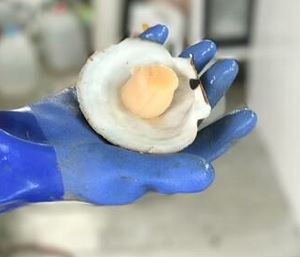
Large Scale Fin-Fish and Aquatic Farms Could Hamper Maine Aquaculture Industry
As proposed, the Nordic Aquafarms project would raise more than 72 million pounds of salmon annually on its 56–acre campus in Belfast, Maine. The site would utilize about 5,200 gallons of water per minute, a combination of both saltwater taken from the nearby Gulf of Maine and freshwater obtained from groundwater wells, city-owned aquifers and reservoirs. The permit application indicates the facility would discharge more than 7 million gallons of filtered wastewater into the Belfast Bay each day. It’s that last figure that concerns many local residents. Marsden Brewer is a commercial fisherman and scallop farmer who also serves as president of the Maine Aquaculture Co-op. Brewer was one of more than a dozen fishermen and fish farmers who spoke out against the Nordic project at a statewide hearing this spring. “After years of misuse, we’re finally starting to see a lot of good things happening in this bay,” Brewer says. >click to read< 09:56
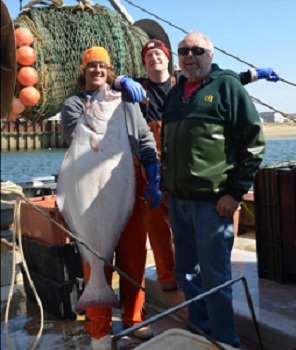
‘Amazing’ halibut, one of the largest fish in the Gulf of Maine, are making a comeback
Halibut are one of the largest fish in the Gulf of Maine, second only to bluefin tuna, swordfish and large sharks. Historically they were a mainstay of the fishing industry along with cod. The National Marine Fishery Service began regulating the halibut fishery in the 1990s and there is a one fish per trip per boat limit on catch. This has been a boon to their rebound. This past spring while fishing for haddock my husband, David, caught four huge halibut. They ranged in size from 40 to 60 pounds. In the past, he has caught one or two a year which were large enough to be legal to keep. The current minimum size is 41 inches. My husband caught two halibut near Jeffrey’s ledge in the mid-1990s which weighed 120 to 140 pounds.,, but David has noticed a strange thing about halibut, they seem to swim in pairs. >click to read< 15:29
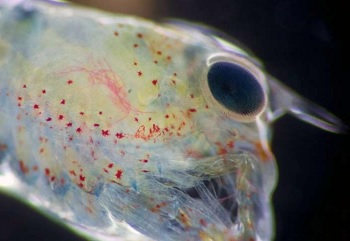
Study: Microplastic fiber pollution harms lobster larvae
A study published in the Marine Pollution Bulletin reports that the fibers affect the animals’ feeding and respiration, and they could even prevent some larvae from reaching adulthood. “Lobsters play a fundamental role in the Gulf of Maine ecosystem as well as the state’s economy, and it is important that we understand how pollutants impact their development.” Young lobsters grow to adulthood through four distinct developmental stages, and the researchers found that the physiology of each stage determined how the animals interacted with plastic fibers. The youngest lobsters didn’t consume them—but they were plagued by fibers accumulating under the shells that protect their gills. >click to read< 16:04

Can New England’s cod fishing industry survive? (How can the scientists and regulators ignore the ever increasing seal predation?!)
Gloucester, Massachusetts, grew up around cod. The waterfront teemed with boats and fishermen, heaps of fish thrashing in wire baskets. Boats were inherited from fathers and shipyards boasted of operating since 1684. As late as the 1980s, the cod were so abundant and large (30-50lb each) that the fishermen still brought in big hauls. Cod remains the state fish of Massachusetts., “We’ve been regulated out of existence,” former Gloucester fisherman Sam Sanfilippo said in 2017. “This used to be the biggest fishing community in the world. Ice companies, wharves, fish dealers, truckers, supermarkets … All through high school, I was always a fisherman. And here I am today: recycler, bike seller, furniture-maker. “I’m 50 years old and I don’t know what the hell I am.” >click to read< 07:30
Canada to ban ‘nuisance seals’ killing to keep access to U.S. market – Canada will abolish permits that allow the killing of “nuisance seals” by commercial fishermen and aquaculture in an effort to maintain access to the lucrative U.S. seafood market, Fishery management failure enacted for fish farmers >click to read<






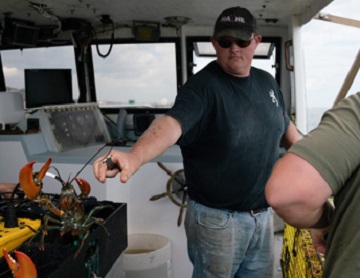



























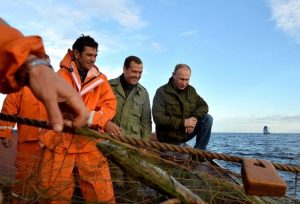
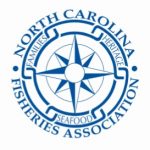
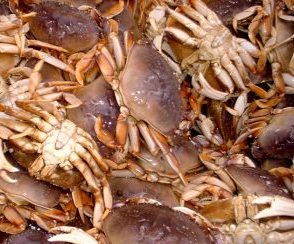
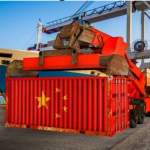

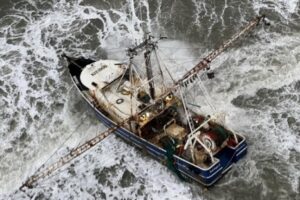
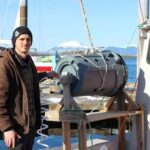
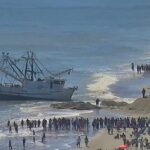
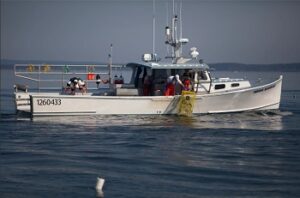




Maine delegation requests comment period extension for BiOp with profound impact on Maine lobstermen
The BiOp is an assessment of a federal agency’s impact on an endangered species. In this case, the Biological Opinion assesses the effectiveness of regulations that the National Oceanic and Atmospheric Administration has imposed on the Maine lobster fishery to protect the North Atlantic Right Whale. Maine lobstermen have already taken significant steps to protect the right whale, despite there being no direct evidence that a single right whale serious injury or mortality has been attributable to the Gulf of Maine or Georges Bank lobster fishery since 2004. >click to read< 09:29
Share this post